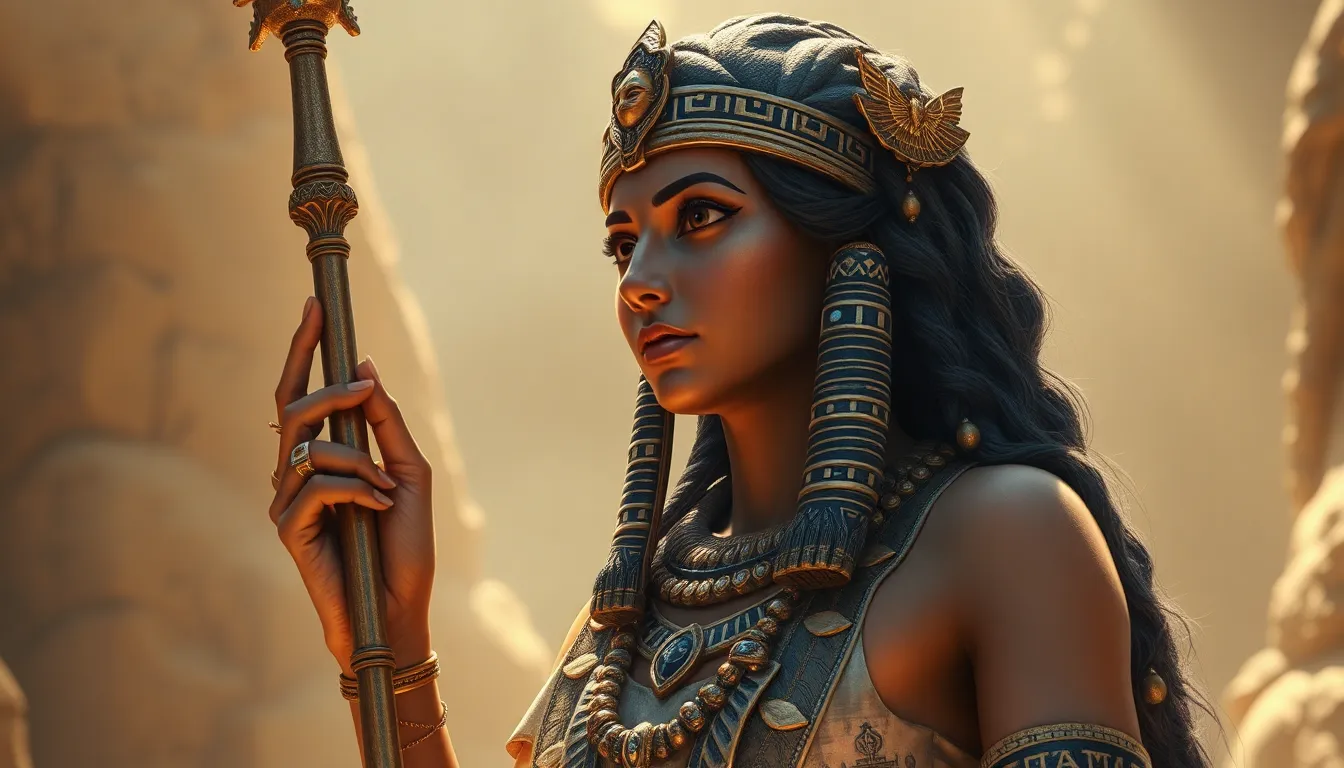The Enigmatic Isis: A Goddess of Love, Magic, and Healing
I. Introduction
Isis stands as one of the most significant deities in ancient Egyptian mythology, embodying the complexities of love, magic, and healing. Revered for her nurturing qualities and powerful sorcery, she transcended the traditional roles of a goddess, influencing not only the lives of the ancient Egyptians but also the cultures that followed. This article aims to delve into the multifaceted nature of Isis, exploring her historical context, attributes, and the enduring legacy she has left behind.
II. Historical Context of Isis
The origins of the Isis cult can be traced back to the early dynastic period of ancient Egypt, around 3000 BCE. Initially worshipped in the Nile Delta, her influence quickly spread throughout Egypt and beyond, becoming a central figure in religious practices.
- Origins: Isis was initially associated with the throne and kingship, but her role evolved to encompass a broader range of attributes.
- Evolution: Over different dynasties, particularly during the Middle Kingdom and the Ptolemaic period, her worship intensified, culminating in the establishment of temples dedicated to her.
- Geographical Influence: The cult of Isis extended beyond Egypt to Greece and Rome, illustrating her universal appeal.
III. Isis as the Goddess of Love
In Egyptian mythology, Isis is often seen as the epitome of love and motherhood. Her relationship with her husband, Osiris, is a cornerstone of her narrative.
- Representation: Isis represents unconditional love and devotion, symbolizing the ideal mother and wife.
- Romantic Relationships: The love story of Isis and Osiris is a poignant tale of devotion. After Osiris’s death, Isis’s relentless search for him showcases her deep love and commitment.
- Rituals and Prayers: Worshippers often invoked Isis in their prayers, seeking her blessing in matters of love, family, and fertility.
IV. The Magical Powers of Isis
Isis is renowned as a powerful practitioner of magic and sorcery, often depicted as a goddess who could manipulate the forces of nature and the cosmos.
- Practitioner of Magic: She is often referred to as the “Mistress of Magic,” possessing knowledge of spells and incantations that could heal and protect.
- Key Myths: One of the most famous myths is the resurrection of Osiris. After he was murdered by Set, Isis used her magical abilities to bring him back to life, demonstrating her unparalleled power.
- Significance of Spells: The spells associated with Isis were integral to many ancient Egyptian rituals, reflecting her role as a vital figure in the practice of magic.
V. Healing and Protection
Isis’s association with healing is profound, as she is often called upon for protection and health in ancient Egyptian rituals.
- Goddess of Healing: Isis was revered as a healer, often depicted with a throne symbol on her head, representing her royal status and protective nature.
- Rituals and Practices: Ancient Egyptians performed various rituals, such as offerings and prayers, to invoke her assistance in healing ailments and providing protection against malevolent forces.
- Influence on Healing Arts: Her legacy influenced the development of medicine in ancient Egypt, with many practitioners invoking her name in their healing practices.
VI. Artistic Representations of Isis
Isis’s image permeated ancient Egyptian art, showcasing the reverence held for her throughout history.
- Common Imagery: Isis is commonly depicted as a woman with a throne-shaped crown, often nursing her son Horus or holding ankh symbols of life.
- Significant Artifacts: Notable artifacts, such as statues and reliefs found in temples, illustrate her importance in both domestic and ceremonial contexts.
- Cross-Cultural Depictions: As her worship spread, depictions of Isis adapted to local cultures, showcasing her influence across different civilizations.
VII. Modern Interpretations and Legacy
In contemporary times, Isis has seen a revival in various spiritual practices and cultural expressions.
- Revival in Spirituality: Neopaganism and contemporary spiritual movements have embraced Isis, celebrating her as a symbol of empowerment and femininity.
- Influence in Literature and Art: Isis’s legacy continues to resonate in modern literature, film, and art, often representing themes of love, resilience, and magic.
- Enduring Symbol: Today, Isis remains a powerful symbol of female strength and divine love, inspiring countless individuals across different cultures.
VIII. Conclusion
Isis’s significance as a goddess of love, magic, and healing is undeniable, as her narrative reflects universal themes that continue to resonate today. As we reflect on her multifaceted nature, it becomes clear that her story is not just an ancient myth but a cultural touchstone that has shaped perceptions of femininity, power, and resilience throughout history. The cultural impact of Isis endures, reminding us of the strength found in love and the transformative power of magic and healing.




